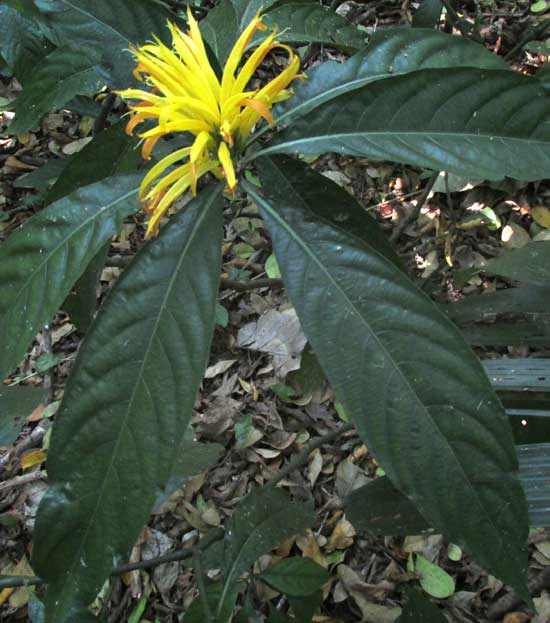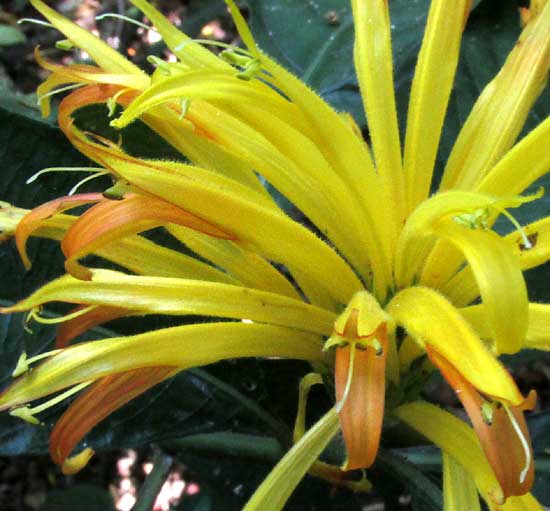Excerpts from Jim Conrad's
Naturalist Newsletter
from the May 22, 2016 Newsletter with notes from a visit in mid April to Lacanja Chansayab in the Lacandon Reserve; elevation 200m (650ft), N16.604°, W90.917°; Chiapas, MÉXICO
YELLOW JACOBINIA
About a month ago, on April 14th, in the Lacandon community of Lacanja Chansayab in Chiapas's Lacandon Reserve in extreme southeastern Mexico, when I entered the forest near the campground where I stayed, a shoulder-high bush occupying the forest's shadowy understory was resplendent with terminal clusters of two-inch long (5cm), yellow blossoms, shown below:

A close-up of some of its curve-tubed, two-lipped blossoms is shown below:

Each flower bore only two stamens, which were attached to the corolla tube -- not arising from below the ovary, as often is the case.
Though this was something new for me, several similar species with clusters of bright, two-lipped flowers bearing either two or four stamens instead of the expected five have been identified, so from the first it was clear that this was a member of the large, mostly tropical Acanthus Family. Such a large, showy species was bound to have been taken into cultivation, and this helped with the identification process: I just did a Google image search on the keywords "Acanthaceae yellow Mexico," and on the first one or two pages of thumbnails, there it was.
It's the Yellow Jacobinia, JUSTICIA AUREA. Earlier the species was assigned to the genus Jacobinia, which accounts for the English name. Sometimes it's also called Yellow Justicia. It's native from Mexico to Panama.
Garden shops up north market it as an evergreen shrub reaching ten feet high (3m) and blooming year-round, preferring light shade, and hardy down to the freezing point. Most Internet pictures of the species growing in gardens shows larger plants than ours, with much taller clusters of flowers. I guess that happens under cultivation, or maybe they're cultivars. Our Yellow Jacobinias were wild plants, though, competing with all other organisms in that environment for limited resources, so it's amazing that the plants looked as robust as they did.